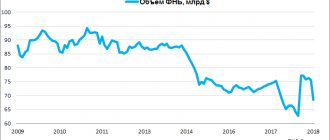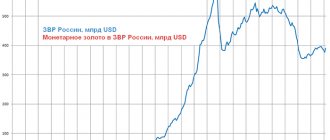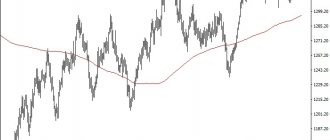Let's figure out what the gold reserves of the world's countries are for 2021, and why they are needed. In the 21st century, economic crises arise one after another. Finances are depreciating, goods and services are becoming more expensive. However, such situations have always happened. Therefore, all countries in the world have gold reserves to keep everything under control. Let's see what the largest gold reserves in the world are today.
World gold reserves
An interesting situation emerges regarding gold reserves. We decided that the ranking would be better than the table. So:
- USA. These are the leaders in the gold and foreign exchange rating. As of today, the state has been able to increase its reserves compared to last year. The USA has 8133.5 tons of the purest minerals. Interestingly, the state was previously on the 5th line of the ranking.
- Germany. Gold reserves of 3373.6 tons give the Germans a well-deserved second place. This is 4 tons less than last year. However, officials said that, after many years, it was finally possible to withdraw German resources from the United States.
- Italy. This small state has had stable reserves of precious minerals for two decades. As of February 2021, the strategic arsenal has not changed and amounts to 2451.8 tons of gold.
- France. For the French, nothing has changed either: 2435.8 tons - these are the country’s gold reserves.
- China. Interestingly, until recently, China was considered the state with the largest gold and foreign exchange reserves. Now China is only in fifth place. In China, nothing has changed for several years: there are 1,842.6 tons of yellow metal in storage. At the same time, China's gold reserves are under reliable protection.
- Russia. The Central Bank is actively increasing its gold and foreign exchange reserves, and as of February 2021, the Russian Federation has 1857.8 tons in its storage facilities. The Krasnoyarsk Territory and Altai are on the list of leaders in gold production.
- Switzerland. The country is small, but that doesn’t stop it from being rich. To this day, 1040 tons of yellow metal lie in Switzerland.
- Japan. Yes, if we talk about gold and foreign exchange reserves by country, then in the overall ranking the state occupies eighth position. However, in East Asian countries it has secured second place. For 18 years, no one has changed the national reserves - they remain at around 765.2 tons.
- Netherlands. The small country is gradually increasing its reserves. As a result, there are 612.5 tons in storage.
- India. In our ranking, the state occupies tenth position. 557.8 tons of minerals are under reliable protection in foreign exchange funds.
If we talk about Canada’s gold reserves, this country managed to completely exhaust it in 2021. The public has accumulated certain questions about this matter for officials.
Kazakhstan's gold reserves began to suddenly increase. Now the country is one of the twenty countries with the largest reserves of precious minerals. In total, there are 285.7 tons in storage facilities in this country.
Total world reserves of the yellow fossil for 2021 are more than 30,000 tons.
Results of 2021. How the gold and foreign exchange reserves of the Russian Federation have changed
Gold and foreign exchange reserves (GFR) are liquid assets at the disposal of the Bank of Russia and the Government of the Russian Federation, used by them to finance the balance of payments deficit, influence the exchange rate through interventions, maintain confidence in the currency and economy of the Russian Federation, and also as a basis for foreign borrowing. Simply put, gold and foreign currency reserves are the safety margin of the national economy.
According to the management structure, funds are allocated under the management of the Ministry of Finance, included in gold and foreign exchange reserves - state funds, and under the management of the Central Bank - all other reserves.
State funds are special entities created to stabilize the economy. Until 2021, there were two of them: the Reserve Fund and the National Welfare Fund (NWF). Since 2021, the Reserve Fund has ceased to exist, having merged with the National Welfare Fund. The main goal of the National Welfare Fund is to provide co-financing of pension savings of citizens of the Russian Federation, as well as to cover the deficit of the federal budget and the budget of the Pension Fund of the Russian Federation.
The National Welfare Fund is formed from oil and gas revenues of the federal budget in accordance with the budget rule (read more in a special article) and from income from the management of the fund’s funds.
In 2021, funds in the accounts of the National Welfare Fund amounted to $68.55 billion or 4.6% of the country’s GDP. The growth rate was +5.2% since the beginning of the year. The ratio of the volume of NWF assets to GDP is important, since when the 7% mark is reached, the surplus can be used for investment in infrastructure projects.
At the same time, the delay between receiving income from the budget rule suggests that the fund will receive a significant part of the oil revenues for 2021 only in 2021. According to the forecast of the Ministry of Finance, the volume of the National Welfare Fund at the end of 2021 will amount to 7.8 trillion rubles, in 2021 it will grow to 11.37 trillion rubles, in 2021 - to 14.18 trillion rubles.
The structure of the country's gold and foreign currency reserves by type of asset is divided into two main categories: foreign exchange reserves and monetary gold. Foreign exchange reserves are a basket consisting of foreign currencies and debt securities denominated in them, as well as special drawing rights (SDRs) and the reserve position in the IMF. Monetary gold - gold bars and coins made of gold with a metal purity of at least 995/1000.
The total volume of gold and foreign currency reserves since 2014, against the backdrop of foreign exchange interventions to support the ruble, the country's reserves have decreased by 25%. The increase in reserves began only in 2015 and since then this process has continued.
As of December 1, 2021, Russia's gold and foreign currency reserves amounted to $462.1 billion, an increase of 6.8% compared to the beginning of the year. Both foreign exchange reserves and gold increased. Gold reserves amounted to $82.9 billion or 18% of all Russian reserves. Compared to January 1, 2021, the growth was 8.2%. Foreign exchange reserves over the same period increased by 6.5% to $379.2 billion.
It is worth considering that gold and foreign currency reserves are recorded in US dollars; accordingly, changes in gold prices and exchange rates affect the size of reserves. Since December 1, 2021, the price of gold has decreased by 3.7%, which means that the Bank of Russia's physical gold reserves increased by more than 12% during the period.
At the end of the third quarter of 2021, Russia ranks sixth in the world in terms of total gold and foreign exchange reserves.
The growth rate of Russia's gold and foreign currency reserves is one of the highest among the world's largest economies. In recent years, this trend has become even more pronounced. Sanction pressure is making itself felt, and the formation of a safety margin against this background looks quite logical.
Based on the criterion of adequacy of gold and foreign exchange reserves in months of imports, Russia ranks 8th in the world. The country is able to cover its imports of goods and services for 16 months. Saudi Arabia holds the maximum value - the country provides imports for 31 months.
Noticeable changes in the foreign exchange component of gold and foreign exchange reserves occurred in 2018 due to a reduction in the Russian Federation’s share in American debt securities. The policy of de-dollarization and growing tension in Russian-American relations, coupled with the threat of sanctions and the potential blocking of Russian assets, provoked a fair exit from US treasury securities.
If at the beginning of the year Russia held $96.9 billion in Treasuries, then as of September 2021, this amount decreased almost 7 times to $14.1 billion. At the same time, the amount of investments in securities in the structure of the currency component did not change so much: -9% by the beginning of the year, most likely there was a reorientation to the debt markets of Asia and Europe.
In general, the year turned out to be very favorable for the country's gold and currency reserves. The high cost of oil, which persisted throughout the year, provided additional income for the National Welfare Fund, which will be reflected on the balance sheet in 2021. The share of monetary gold continues to increase at a high pace. If tensions between Russia and the West do not decrease, the trend will continue.
The prospects for the country's gold and foreign exchange reserves in 2019-2021 are quite good. The forecast of the Ministry of Finance of the Russian Federation for oil assumes a significant excess of the price of fuel over the established limit within the framework of the budget rule (40.8 rubles per barrel), creating additional inflows into the National Welfare Fund. The projected budget and Pension Fund surplus in 2019-2020 will make it possible to save these funds and reach the target level of 7% in a relatively short time, which can create additional potential for the implementation of investment projects in the country.
BCS Broker
United States gold reserves
As mentioned earlier, the largest reserve of gold in the world is located in the United States. This situation raises questions. At the same time, not only the Russian Federation, but also other countries are interested in the problem. Russian officials recall the fairy tale about Pinocchio, when the boy hid his modest money in the ground and hoped to save the money and make a profit.
The Germans were the first to be outraged. They called on America to send gold to its historical homeland. However, for the time being, no one agreed. But the German government still managed to do it. The supplies returned to the country after enormous efforts. But the United States has not lost its status as the country with the most yellow metals. This country of gold has only increased the stock of the metal in its vaults. Nothing happened to the economy.
You can go back in history to trace an interesting point. For example, after World War II, the USSR paid debts to America until the 70s, because the States were supplying food and military equipment in those days.
The whole problem is that the main world supply of gold is in the United States. There is nothing stopping the rulers from causing another economic crisis. The precious metal will be located mainly in America.
Reliability and sovereignty
This yellow metal has long occupied its niche in people’s lives: it is needed not only to create jewelry masterpieces, but also to ensure the exchange rate, economic stability and even independence. Sometimes gold can also act as a universal means of payment - it cannot be blocked like a foreign currency account. World reserves are growing by country, and this trend continues.
The global financial system is built focused on one player - the United States of America:
- most transactions in the world are carried out in the currency of this particular country;
- about six dozen countries placed their gold and foreign exchange reserves or part of them in trust in the United States.
Special facilities at Fort Knox, the American Mint, West Point and the Federal Reserve Bank store 4500, 1400, 1700 and 400 tons of the precious metal, respectively. This state of affairs allows the United States to put pressure on the governments and policies of states that have entrusted almost part of the guarantees of their sovereignty to America. However, you should not assume that this is the only place where other people’s gold is stored.
For example, Germany put them in different baskets: it stored parts of its stock in the USA, England and France. In times of political crises, the issue of economic independence becomes the most pressing. In addition, the reliability of a business partner, whose debt is almost equal to the gross income (leading experts in the field of economic relations say this), gives rise to certain concerns.
And the fact that since 2013 Germany has been persistently working to return its gold “to its homeland.” During this time the following returned to the country:
- from the USA - 18.4%;
- from England - 0.2%;
- from France - 8.3% of the German gold reserves located there.
Now 47.9% of reserves are stored in Frankfurt am Main. The withdrawal process continues.
The example of Germany has become a clear illustration of the aggravation of American-European relations and the conflict of interests in the European Union itself. Many European countries have signed the Central Bank Gold Agreement. The fourth version of the SEC obliges its participants to refrain from selling significant volumes of the precious metal. By the way, it is very significant that the Republic of Turkey also withdrew its gold from the United States. There was not so little of it there - 220 tons.
People's Republic of China
The largest holder of gold among East Asian states and a serious threat to US dominance. According to published data, in 2021 and 2021 the volume of national gold reserves amounted to 1842.6 tons . The share of all gold and foreign exchange reserves is only 2.4%. But it’s worth considering that this is not so little at all: in 2021, the PRC’s reserves were equal to $140 trillion.
China's activity in purchasing aurum in the gold market is growing, the Shanghai Gold and Exchange Exchange is increasing trading volumes. The Celestial Empire has significantly strengthened its position, becoming the leader in the production of this precious metal and one of its largest consumers.
Russia's strategic reserve
Geopolitical reasons and the desire to ensure the safety of its reserves in a situation where sanctions follow one after another, payments in dollars are limited, the state has set a course for replenishing the gold reserve and adjusting gold purchases. In addition, the share of American bonds in gold and foreign reserves decreased significantly: from 96 to 16 billion dollars.
Over the past ten years, expenses have quadrupled, and thanks to this, the “golden share” has increased tenfold. Well, in just three quarters of 2021, a third more was spent on the purchase of precious metals than in 2021. The pace of purchases is such that experts believe that in the foreseeable future, in just three years, Russia may become one of the three largest holders of gold. So far the Russian Federation is in fifth position.
There are two types of gold stored in the gold and foreign exchange reserves of the Russian Federation: bullion and monetary. In different years, the percentage of this component varied, as did its physical volume. The minimum quantity was noted in 1991 - 290 tons. At the beginning of 2021, the Central Bank announced a figure of 1,838.8 tons, and already in September it announced a much more impressive figure of 1,998.5 tons. This is 16.8% of the country's total gold and foreign reserves.
There are many tables that summarize data on gold and currency reserves of different countries. It is worth noting that the true size of the gold reserve is a state secret. Therefore, data on how much precious metal Russians have varies from source to source:
- officially announced 1999.95 tons;
- in data released by Bloomberg, it is 2170 tons;
- According to information from the World Gold Council, the presence of 1970 tons is confirmed, with a total value of 77.5 billion dollars.
Centuries passed, states were born and collapsed, but the role of the yellow precious metal remained unchanged. In an empire or republic, it was a measure of the country's security and power and helped reduce financial losses of the budget during periods of crisis. Is it any wonder that the gold reserves of the world's countries are steadily growing? If, of course, there are funds in the budget to purchase this metal.
Which countries are getting rid of gold reserves?
Canada is a supporter of the anti-Russian strategy. According to the head of the National Bank of Canada, the gold and foreign exchange reserves amount to 2.5 kg, although two decades ago they amounted to thousands of tons. The reduction of the country's gold reserves became one of the points of the economic growth strategy, according to which currency and securities took priority. According to Canadian financial managers, gold only allows you to preserve savings. Compared to deposits and bonds, the precious metal seriously loses because it requires special storage conditions and is a fairly costly asset.
Ukraine, like Canada, sells gold. And the reason is not a change in gold production volumes in Russia. In 2014 alone, the Ukrainian government sold almost a quarter of the entire reserve on the market - 14 tons. According to analysts, the precious metal is no longer used for intervention. Now, in order to strengthen the exchange rate of the national currency, currency is actively used. This is what the NBU is guided by. However, by selling its main gold reserves, Ukraine is at great risk, since it becomes dependent on the economies of other states.










